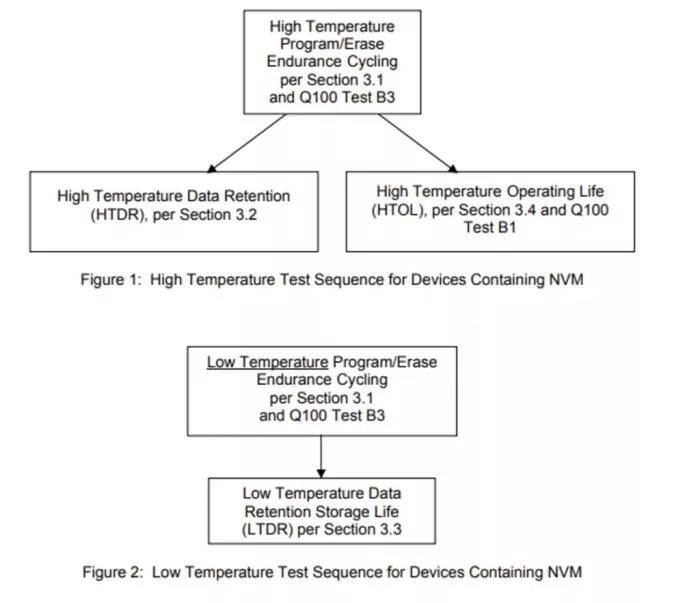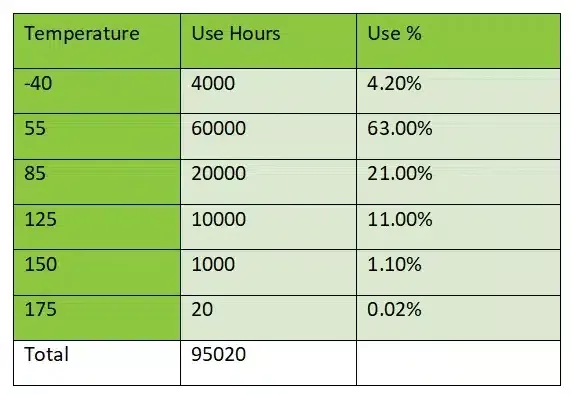The Road to AEC-Q100 Qualification
When it comes to cars, safety and reliability are paramount. That’s why almost every single part of a car must meet standards and regulations designed for the specific stresses the component could face throughout its lifetime. This includes everything from engine components to the infotainment cluster to the window glass. Pretty much the only standard parts of a car that aren’t subject to such controls are the cup holders.
The strictest standards are those for safety-critical components like brakes, seatbelts and airbags, tires, steering systems, and engine control and monitoring. These systems must comply with multiple regulatory and industry standards – including passing crash and durability tests as well as compliance checks – because they directly impact passenger safety.
When it comes to vehicle electronics, there are similar strict reliability tests, especially with the increasing complexity and proliferation of technologies like advanced driver assistance systems (ADAS). For integrated circuits (ICs) including microcontrollers (MCUs), sensors and memory chips, the qualification standard is called AEC-Q100.
AEC-Q100 is a stress test qualification established by the Automotive Electronics Council (AEC), an organization originally formed by Chrysler, Ford, and GM to establish common part qualification and system quality standards. The council provides an official document that outlines the AEC-Q100 qualification process called Stress Test for Qualification for Integrated Circuits.
If a device is qualified to AEC-Q100, it means that it has passed the specified stress tests and guarantees a certain level of quality/reliability. This makes AEC-Q100 qualification important not only for automotive applications; knowing a technology is AEC-Q100 qualified tells designers of all applications that it is very high quality, so they can feel more confident when using it.
Withstanding Harsh Conditions
AEC-Q100 defines four ambient temperature ranges (known as ‘grades’) designed to cover the several different thermal environments in which automotive applications operate. This classification enables designers to select the components that align best with their needs. The lower the grade; the more qualification constraints are required. AEC-Q100 defines four ambient operating temperature ranges:
- Grade 0: -40°C to +150°C
- Grade 1: -40°C to +125°C
- Grade 2: -40°C to +105°C
- Grade 3: -40°C to +85°C
Grade 0 components are rated for extreme conditions and can handle the harshest environments in a vehicle. This includes devices used in powertrain and engine control, and many others that must be able to withstand high temperatures, vibration, and continuous operation.
Beyond the ability to reliably withstand harsh conditions, automotive ICs must also be designed for safety, security and longevity. Some requirements can be quite different than those in consumer markets.

Above: consumer versus automotive requirements
Non-Volatile Memory in Automotive
Non-volatile memory (NVM) for automotive must support fast boot, instant response, and frequent over-the-air (OTA) updates. Increasingly, auto makers are looking to integrate an MCU and embedded NVM in a BCD process to replace solutions that previously used an external standalone memory. And, as many SoCs move to advanced nodes to meet performance requirements, companies are looking to alternatives to embedded flash like Weebit ReRAM.
ReRAM (RRAM) is reliable at high temperatures, it can withstand harsh conditions like vibration and electromagnetic interference (EMI), and it has high endurance, fast switching speed, long-life, and innate security. It can also effectively scale to the most advanced process nodes.
When supplying NVM for automotive applications, it must achieve AEC-Q100 qualification.
Accelerated Stress Testing
To achieve AEC-Q100 qualification, it’s necessary to test three unique lots which ran at different times in the production line, with 77 samples per lot to assure the statistical significance level for very low failure rates. The samples must undergo 1,000-2000 hours of accelerated testing with zero failures – for each of the specified tests. For a discussion of accelerated testing, see our previous article, “Compressing a Lifetime’s Worth of Stress: ReRAM Qualification Explained.”
Tests include those for endurance, data retention, and operating life. To rate for Grade 0 applications, the samples must repeatedly demonstrate 150°C operation for up to 100K endurance cycles, with very low bit error rate (BER) throughout. The specific flow and tests are outlined in the AEC-Q100 Rev D1 Non-Volatile Memory Program/Erase Endurance, Data Retention and Operating Life Test.

Looking beyond the baseline stress tests, there are also specific mission profiles that we must consider. The qualification flow mentioned above gives a great deal of confidence to potential customers, however, when selecting a part for their specific applications, companies must look at the specific use case surrounding a part.
A part may be expected to reach the highest temp of 175⁰C for only 0.02% of the time and -40⁰C only 4.20% of the time, but for most of the time, the part operates at much more moderate temperatures. See an example of such a mission profile in the table below.
Commonly, companies put together sets of numbers that estimate the percentage of time a part will be at a certain temperature, then calculate the numbers to determine whether the expected real-life stress is expected to be less than or more than the stress that was applied during qualification. If the result is less than the qualified time, customers can be confident the part will not fail from aging issues during its normal lifetime.

Above: An example of a calculation for an automotive mission profile
Conclusion
Having an embedded NVM module that is fully qualified for AEC-Q100 is the first big step to getting the NVM designed into automotive applications – as well as other applications in harsh environmental conditions. Automotive end products that use devices in a new process must be qualified for AEC-Q100. Each time a module incorporating a specific technology like Weebit ReRAM is qualified, it demonstrates that the technology is mature, it is thermally stable with high endurance, and it reaches the standard of zero defects per million parts.
In assuring quality in each part of the vehicle, every single player in the supply chain must ensure their part adheres to quality standards. From IP makers like Weebit to semiconductor companies, product companies, foundries, systems companies and automakers – and others in between – functional safety is a clear priority. At Weebit we are dedicated to ensuring our IP is proven ready for integration in automotive applications today.
AEC-Q100 qualification is a sign of high quality, not only for automotive, but for all application domains.
Want to learn more about the potential of Weebit ReRAM in automotive?
Check out this recent article in EE Times, which touches on the topic: Onsemi’s Treo Taps Weebit ReRAM.
Related Semiconductor IP
Related Blogs
- The Road to Innovation with Synopsys 224G PHY IP From Silicon to Scale: Synopsys 224G PHY Enables Next Gen Scaling Networks
- Analog Bits Builds a Road to the Future at TSMC OIP
- DeepSeek’s aftermath: Lessons to learn as the dust settles
- From DIY To Advanced NoC Solutions: The Future Of MCU Design
Latest Blogs
- Physical AI at the Edge: A New Chapter in Device Intelligence
- Rivian’s autonomy breakthrough built with Arm: the compute foundation for the rise of physical AI
- AV1 Image File Format Specification Gets an Upgrade with AVIF v1.2.0
- Industry’s First End-to-End eUSB2V2 Demo for Edge AI and AI PCs at CES
- Integrating Post-Quantum Cryptography (PQC) on Arty-Z7
